-
Reagents
- Flow Cytometry Reagents
-
Western Blotting and Molecular Reagents
- Immunoassay Reagents
-
Single-Cell Multiomics Reagents
- BD® AbSeq Assay
- BD Rhapsody™ Accessory Kits
- BD® Single-Cell Multiplexing Kit
- BD Rhapsody™ Targeted mRNA Kits
- BD Rhapsody™ TCR/BCR Profiling Assays for Human and Mouse
- BD Rhapsody™ Whole Transcriptome Analysis (WTA) Amplification Kit
- BD® OMICS-Guard Sample Preservation Buffer
- BD Rhapsody™ ATAC-Seq Assays
-
Functional Assays
-
Microscopy and Imaging Reagents
-
Cell Preparation and Separation Reagents
-
Training
- Flow Cytometry Basic Training
-
Product-Based Training
- FACSAria Product Based Training
- FACSMelody Product-Based Training
- FACSLyric Product-Based Training
- FACSCanto Product-Based Training
- LSRFortessa Product-Based Training
- FACSymphony Product-Based Training
- FACSDuet Product-Based Training
- HTS Product-Based Training
- BD FACSDiscover™ S8 Cell Sorter Product Training
-
Advanced Training
-
Thought Leadership
-
Product News
- Blogs
- Scientific Publications
-
Events
- Nature Research Academies Workshop 2023
- CYTO 2023: Advancing the World of Cytometry
- Singapore Gene & Cell Therapy Conference 2023
- EuroFlow Educational Workshop
- Nature Research Masterclass 2023
- Novel Approaches to Single-Cell Plant Research: from Real-Time Imaging Cell Sorting to Single-Nuclei Transcriptomics
- Advances in Immune Monitoring Series
-
Product News
-
- BD® AbSeq Assay
- BD Rhapsody™ Accessory Kits
- BD® Single-Cell Multiplexing Kit
- BD Rhapsody™ Targeted mRNA Kits
- BD Rhapsody™ TCR/BCR Profiling Assays for Human and Mouse
- BD Rhapsody™ Whole Transcriptome Analysis (WTA) Amplification Kit
- BD® OMICS-Guard Sample Preservation Buffer
- BD Rhapsody™ ATAC-Seq Assays
-
- FACSAria Product Based Training
- FACSMelody Product-Based Training
- FACSLyric Product-Based Training
- FACSCanto Product-Based Training
- LSRFortessa Product-Based Training
- FACSymphony Product-Based Training
- FACSDuet Product-Based Training
- HTS Product-Based Training
- BD FACSDiscover™ S8 Cell Sorter Product Training
-
- Nature Research Academies Workshop 2023
- CYTO 2023: Advancing the World of Cytometry
- Singapore Gene & Cell Therapy Conference 2023
- EuroFlow Educational Workshop
- Nature Research Masterclass 2023
- Novel Approaches to Single-Cell Plant Research: from Real-Time Imaging Cell Sorting to Single-Nuclei Transcriptomics
- Advances in Immune Monitoring Series
- Singapore (English)
-
Change country/language
Old Browser
This page has been recently translated and is available in French now.
Looks like you're visiting us from {countryName}.
Would you like to stay on the current country site or be switched to your country?


.png)

Detection of LT-α expression by stimulated human lymphocytes using PE-359-81-11. Human PBMC were stimulated with soluble anti-human CD3 mAb (1 µg/ml, clone UCHT1, Cat. No. 555329) and recombinant human IL-2 (10 ng/ml, Cat. No. 554603) for 2 days. The cells were subsequently cultured in medium containing recombinant human IL-2 for 3 days. Finally, the cells were harvested and re-stimulated for 6 hr with immobilized anti-human CD3 mAb (10 µg/ml) and soluble anti-human CD28 (20 ng/ml, clone CD28.2, at. No. 555725) in the presence of 2 µM GolgiStop™ (aka, monensin; Cat. No. 554724). The cells were harvested, stained with PE-Cy5™-anti-CD4 (Cat. No. 555348), fixed, permeabilized, and subsequently stained with 0.25 µg of PE- anti-human LT-α antibody by using the BD Pharmingen™ staining protocol (left panel). To demonstrate specificity of staining, the binding by PE-359-81-11 was blocked by each of the following: 1) preincubation of the conjugated antibody with excess recombinant human LT-α (Cat. No. 554619; right panel) and by 2) preincubation of the fixed/permeabilized cells with unlabeled 359-81-11 mAb (data not shown) prior to staining with the PE- 359-81-11. The quadrant markers for the bivariate dot plots were set based on the autofluorescence controls and verified using the recombinant cytokine blocking and unlabeled antibody blocking specificity controls.
.png)

BD Pharmingen™ PE Mouse Anti-Human LT-α
.png)
Regulatory Status Legend
Any use of products other than the permitted use without the express written authorization of Becton, Dickinson and Company is strictly prohibited.
Preparation And Storage
Recommended Assay Procedures
Immunofluorescent Staining and Flow Cytometric Analysis: The 359-81-11 antibody is useful for intracellular immunofluorescent staining and flow cytometric analysis to identify and enumerate LT-α producing cells within mixed cell populations. PE-conjugated 359-81-11 antibody is
especially suitable for these studies. The use of a specificity control, such as one of the following, is suggested: 1) recombinant human TNF-β (Cat No. 554619), 2) unlabeled 359-81-11 antibody (Cat. No. 554554), or 3) mouse IgG1 isotype control, PE-MOPC-21 (Cat. No. 554680).
ELISA Detection: The biotinylated 359-81-11 antibody is useful as a detection antibody for a sandwich ELISA for measuring human LT-α protein levels in cell culture supernatants. Biotinylated 359-81-11 antibody can be paired with the purified 359-238-8 antibody (Cat. No. 554557) as the capture antibody, with recombinant LT-α (Cat. No. 554619) as the standard. For specific methodology, please visit the protocols section or chapter on ELISA in the Immune Function Handbook, both of which are posted on our web site, www.bdbiosciences.com.
Neutralization: The NA/LE™ 359-81-11 antibody has been reported to be useful for neutralization of human LT-α bioactivity. A suitable NA/LE mouse IgG1 isotype control to match the 359-81-11 antibody is the 107.3 antibody, (Cat. No. 554721).
Product Notices
- Since applications vary, each investigator should titrate the reagent to obtain optimal results.
- Please refer to www.bdbiosciences.com/us/s/resources for technical protocols.
- Caution: Sodium azide yields highly toxic hydrazoic acid under acidic conditions. Dilute azide compounds in running water before discarding to avoid accumulation of potentially explosive deposits in plumbing.
Companion Products
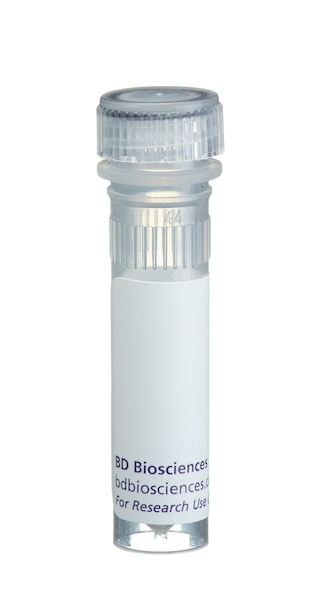

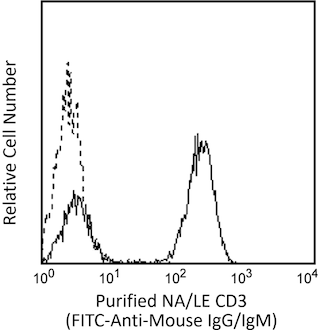
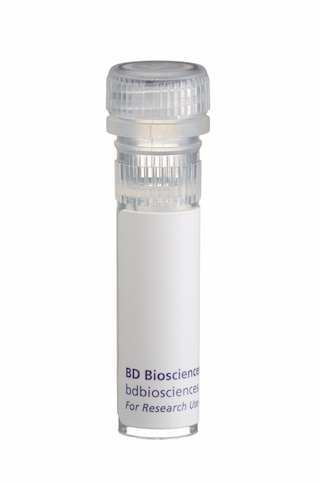
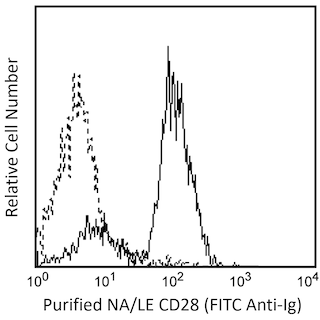
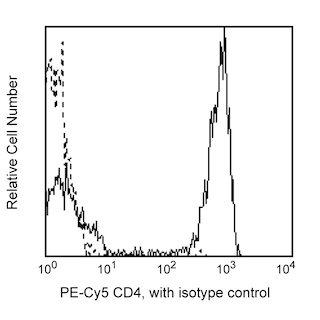
The 359-81-11 antibody reacts with human Lymphotoxin-α (LT-α, also known as tumor necrosis factor-β or TNF-β). The immunogen used to generate the 359-81-11 hybridoma was recombinant human LT-α. This is a neutralizing antibody.

Development References (3)
-
Meager A, Parti S, Leung H, Peil E, Mahon B. Preparation and characterization of monoclonal antibodies directed against antigenic determinants of recombinant human tumour necrosis factor (rTNF). Hybridoma. 1987; 6(3):305-312. (Clone-specific: ELISA, Neutralization). View Reference
-
Meager A, Parti S, Leung H, et al. A two-site sandwich immunoradiometric assay of human lymphotoxin with monoclonal antibodies and its applications. J Immunol Methods. 1987; 104(2):31-42. (Clone-specific: ELISA, Neutralization). View Reference
-
Prussin C, Metcalfe DD. Detection of intracytoplasmic cytokine using flow cytometry and directly conjugated anti-cytokine antibodies. J Immunol Methods. 1995; 188(1):117-128. (Methodology: IC/FCM Block). View Reference
Please refer to Support Documents for Quality Certificates
Global - Refer to manufacturer's instructions for use and related User Manuals and Technical data sheets before using this products as described
Comparisons, where applicable, are made against older BD Technology, manual methods or are general performance claims. Comparisons are not made against non-BD technologies, unless otherwise noted.
For Research Use Only. Not for use in diagnostic or therapeutic procedures.
Report a Site Issue
This form is intended to help us improve our website experience. For other support, please visit our Contact Us page.